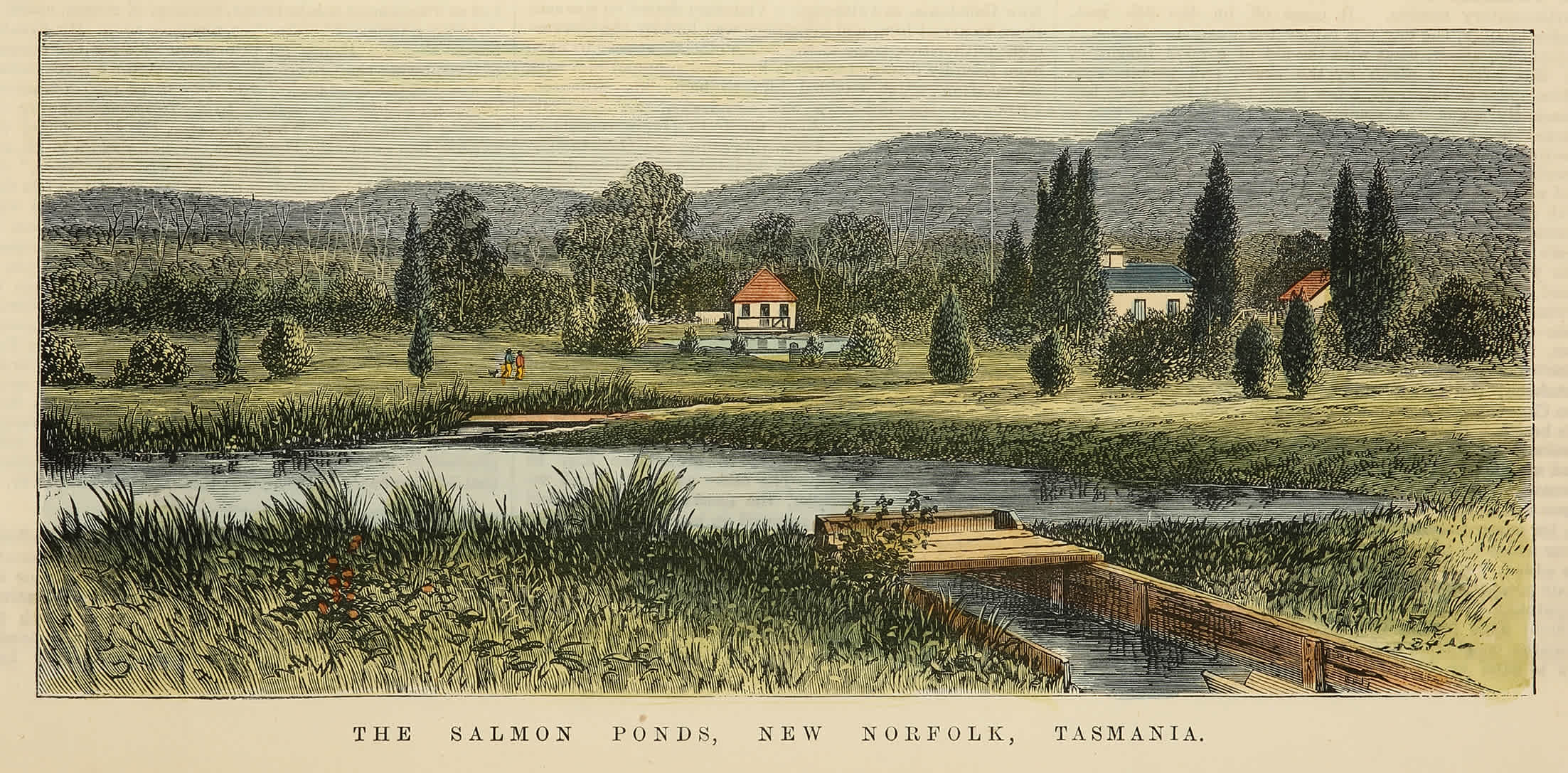“Great things are done when men and mountains meet.” ~ William Blake
I grew up near the coast in the south of England and mountains were not a part of my childhood life. Then came a solo holiday to Switzerland in my 20s. When I saw the Alps from the plane, it had a dizzying impact on me. Seeing these majestic peaks rise to meet a clear blue sky left me, quite simply, in awe.
It’s a feeling that bubbles up on weekend road trips around Tasmania, my new home, whenever I see one of the many rugged mountains that dot this land.
Across the world, the magic and grandeur of mountains have amazed and delighted. By the 18th century, a healthy back-catalogue of inspired artists, poets and writers had borne testament to the extraordinary impact of mountain ranges on creativity. Tasmania, for one, has not been shy of an artistic collective in this regard.
From the early days of European settlement, Tasmanians have had a remarkable history of creativity. Evan Henry Thomas arrived in Hobart from Ireland in 1822 and was the first colonial in Van Diemen’s Land to have poetry published. David Burn, born in Scotland and arriving in Hobart in 1826, is acknowledged for having written the first Australian drama to be performed on stage, The Bushrangers. In 1844, G.B. Goodman took the first daguerreotype of an Australian scene, and JW Newland's shot of Murray Street in Hobart is the earliest Australian outdoor photograph.
Hobart Town held Australia's first art exhibitions in 1837, 1845 and 1846. Landscape painting in Australia has origins in Tasmania when, in 1831, John Glover arrived. Dubbed “the father of Australian landscape painting”, Glover is known across the arts and culture scene for oil and watercolour creations of his mountainous home. More recently, you only have to look at the calibre of work the Glover Prize draws together each year for its $50,000 first prize, Australia’s richest landscape painting prize.
Creativity emerges across our island in a wide-range of forms, from design and architecture to music and contemporary art, not forgetting the festivals that showcase everything creative Tasmanians have to offer: Dark Mofo and The Unconformity being excellent examples. And then there are the award-winning authors: Richard Flanagan, Heather Rose, Robbie Arnott and others, who all hail from these lands.

As a writer who dabbles in both fiction and non-fiction, I have to confess I’ve never felt so laden with ideas and a sense of promise as I have since moving to Hobart. kunanyi’s presence looms gracefully wherever I go. I’ve spent many mornings revelling in my awe of the scenery. I am also currently retraining as a psychologist, and if there’s one thing my training has taught me so far, it’s that where there is a shared human experience, there is probably a shared psychological explanation for it. On the spectrum of human emotion, awe is in its infancy of being studied, but what researchers are discovering about its purpose, specifically for creativity, is compelling.
Awe is one of those words I understand experientially, yet find difficult to define. It’s generally defined along these lines: an emotion variously combining dread, veneration, and wonder that is inspired by authority or by the sacred or sublime. In his book, Living Philosophies, Albert Einstein referred to awe as “the source of all true art and science”.
Within psychology, happiness, sadness, fear and anger have been the most-studied emotions. Awe was historically seen as an emotional luxury and not something psychologists need pay attention to. Recent research has found that awe is an essential component for emotional well-being and may have strong evolutionary benefits.
Generally, when we feel positive emotions, we tap into our existing knowledge and memory banks to back up what we’re experiencing. Whereas other positive emotions don’t necessarily encourage behavioural change, but awe inspires a different response. According to Keltner and Haidt (2003), awe consists of two qualities: perceiving vastness (the stimulus is greater than ourselves) and cognitive accommodation (our minds don’t assimilate what we perceive, so we attempt to absorb as much information as we can).
In a nutshell, awe has the distinct ability to change the way we think. Specifically, it affects the way we think creatively.
In a recent study exploring awe and creative thinking amongst university students, one group of participants took part in a 3D visual experience, and a second group in a “neutral” visual experience. Afterwards, they were asked to complete two verbal tests designed to determine creative thinking. The results found the awe-inspiring 3D visual experience affected key creative thinking components such as fluency, flexibility and elaboration appreciably more than the neutral stimulus.
Dr Melanie Rudd, an associate professor at the University of Houston, specialises in the study of awe. Rudd explores the connection between awe and creativity with a twist – she focuses on mountains. Why mountains? Well, according to Rudd, who grew up near mountain ranges in the US, nothing evokes awe like a mountain.
Knowing how the environment we exist in impacts our state of mind affects how we engage and connect within that environment. It also goes some way to explaining why mountain landscapes have been home to some of the most prolific creatives across the centuries, Tasmania being a fine example.
Elaine Mead lives in nipaluna (Hobart), sharing a creaky weatherboard house with her partner and a very bossy dachsund. She is a freelance writer and educator, and is currently studying to become a psychologist. Elaine's writing has been published internationally in both print and digital media.








